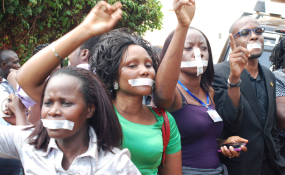Despite the major strides women have gained in leadership, their representation in media is still wanting, says a report by Uganda Media Women Association (UMWA).
The report released on Tuesday at Hotel Africana adds that despite constituting more than 50 per cent of Uganda’s total population, women are allocated less than 25 per cent of the space in different media.
The survey conducted between December 2015 and February 2016 aimed at assessing media coverage of 2016 elections from a gender persepective.
The survey involved 2,624 election-related news stories published in five newspapers including Daily Monitor, New Vision, Red Pepper, Bukedde (all dailies) and The Observer, a tri-weekly publication.
Red Pepper topped with 85 stories on women and was closely followed with Daily monitor (61 stories), Observer (34 stories), New Vision (30), while Bukedde had only 20 stories.
Ms Margaret Sentamu, UMWA executive director, while presiding over the event, yesterday, urged media to shun sex innuendos while covering women.
She cited a story published about former female presidential candidate Maureen Kyalya, in one of the dailies, where the writer focused on Ms Kyalya’s thighs.
“The photographer focused on the “yummy” thighs instead of the great ideas coming from a presidential candidate,” Sentamu said, sending the audience that included university lecturers, media scholars and editors into bouts of laughter.
“Women can be better than sexy,” he added.
Election reporting
The report further indicates that the print media coverage of 2016 general elections was highly skewed against women.
It also reveals the sexist portrayal of women in the media in terms of language, images used as well as stereotypical language.
Out of the 2,495 news sources directly quoted, 85 per cent were male while a meagre 15 per cent were female.
Further more, out of a total of 1,810 photographs, 82 per cent of them depict males leaving women with a paltry 18 per cent.
The only female presidential candidate out of the eight rarely featured in newspapers. The report further exposes the use of men’s pictures against stories on women with some stories running without pictures.
Meanwhile, Mr Okuku Obomba, a mass communication lecturer at Uganda Christian University (UCU) agreed that there is a gender problem in the media. He said the media is audience-driven and hence reporters will work to appease their audiences.
“Journalism mainly focuses on what people want not what they need,” Mr Obomba noted.
He said while the media fraternity has more women than men, women quite often go for public relations while the men remain in the mainstream journalism.

